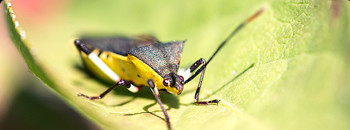As temperatures start to cool, many of us will look for more excuses to spend time inside. But while we are enjoying the comfort of our warm homes this fall and winter, pests will be on the prowl for a cozy place to escape the cold. By following the I.N.S.P.E.C.T. process, you can ensure that pests and rodents won’t make your home their own in the coming months.
Today is the first day of National Inspect and Protect Week. Each day this week, we’ll explore a step in the INSPECT process starting with the first step — Investigate. You can start by posing the question: how could pests enter my home?
There are several things to look at when investigating potential points of entry. It seems obvious that pests enter homes through openings that lead to the outside; but even cracks and openings that seem too small for anything to fit through can be open doors to rodents, cockroaches and ants. Routes leading to these points for entry are often overlooked.
One common way that pests can enter your home is through plants and shrubbery. A good rule of thumb is the leave about 18 inches between the exterior of your home and any shrubs, piles of wood or other plants. Also keep in mind that with an effective pest control program, clinging vines and similar plants are still an option for decorating your doorway.
Once a pest has found its way in to your home or on to your property, it’s a good idea to keep an eye out for droppings and other signs that pests are hanging around. One of the tell-tale signs for ants is a mound of dirt in your lawn and these pest problems are easier to fix if they’re noticed early.
Naturally, pests are drawn to food and water, so when investigating your house inside and out, pay close attention to any opportunity where these resources may be readily available. Dirty plates on the counters encourage pests, and standing water can breed mold and mosquitoes. Garbage cans present the perfect opportunity for pests to feast, so make sure to keep these food sources sealed when they are inside, and as far from you home as possible when they are outside.
Investigating your home may seem tedious, but thorough consideration of what could cause pest problems inside and out while using a thorough checklist, you will save you time and money in the long run.
Check out the video of the day from extension specialist Janet Hurley on how to INvestigate your home!

